Module 4 “Language and Phonics Exercises (Part 1)”
Q1. Cut out all the ten shapes of metal insets on tough chart paper and make creative designs of all levels as described in the book. Paste the inset papers carrying your designs on your assignment.
Level 1
Level 3

Level 9
Q2. Explain how to word building is introduced
to children using Moveable Alphabet and Alphabet boxes at Pink, Green, and Blue
levels.
Ans. Moveable Alphabets are stiff cut-out letters made of plastic. They are introduced to
the children when they have learned to identify the letters and their phonics sounds.
This means they have already progressed step 1 and step 2 as per the framework
of teaching phonics. There are 28 compartments 5 blue vowels and 21 red
consonants. The Moveable Alphabet is an early example of word-building,
supporting the child as he or she begins the demanding tasks of reading and
writing that requires identification of individual letters with their sound.
They are usually accompanied by small object boxes or small pictures of the
objects with which children are familiar.
Building words with the moveable
alphabet pieces allows children to focus on the word rather than the formation
of the letter shape with a pencil, so a child’s understanding of word
construction isn’t limited by his or her fine motor control.
Pink Level:
At the pink level, first students
are just asked to polish their skill of identifying letters and their corresponding
sounds. For example, the directress will ask a group of students to find out
the letter with sound /m/ without encouraging the competition among them rather
than making it a fun-filled activity. At
least one of them will be able to find it and hand it to directress.
Once the children become acquainted
with the exact places of alphabets, they are given a familiar small object
which is a three-letter phonetic word, must be easily accessible letters mostly
in the fashion of CVC (consonant vowel consonant) in their most common sound,
When the student correctly identify the object, they are asked to segment
the word or the directress may sound out each comprising part for example if it
is a hat, a letter with /h/ sound should be searched in the box of
moveable letters then /a/ and /t/, and placing it in its appropriate place on
the mat or table.
This exercise serves the purpose of
analyzing words in a phonic way and preparing children for reading, writing,
and spelling. With the help of large moveable alphabets, students focus on
segmentation while writing and blending while reading the words instead of
focusing on the use of pencil and paper or beautifying their writing skills. Throughout
this activity, children only focus only the skill they are learning, isolating
that concept so that it can be fully mastered.
Blue Level:
At this level, more than 3 letter words are introduced, such
as a barn, ring, plug, or clip. Similar to pink level, small objects or objects
pictures are used.
Segmentation:
Students are first required to identify the objects
correctly. Then students are asked to segment the word into its
basic phonics sound or directress should assist for example if it is a clip it
is pronounced as four-segment /c/, /l/, /i/, /p/ and builds the word with the
help of moveable alphabets
Blending:
Contrary to this while blending the same materials are used
to help in reading. Here directress may show the word first with either
moveable alphabets or written cards and pronounce the phonic sound of each
letter later eloquently blending each sound forming the word.
Green
Level
The child is finally introduced to the green level comprised
of phonograms, after the successful completion of the pink and blue levels. In
this level, phonetic words with one phonogram are used. For example, while
teaching the phonogram “sh” the teacher introduces the child to words like
brush, shell, shrub, fish, etc. Less common phonograms are only introduced to
the child as and when he comes across them.
Material:
Two alphabet boxes one containing all alphabets in red and the
other all in blue or black.
First, green boxes containing green color-coded pictures and
alphabet boxes containing phonetic words with only one phonogram are arranged.
Phonograms themselves should be in red while the rest of the alphabets are in black/blue.
The phonogram is written on the top of the box. Each phonogram has a different
box dedicated to it. The directress shows the phonogram written on the lid to
the child and asks to pronounce it. He/she picks up one of the picture cards
and names it at the same time. Then she shows the alphabet cards to the student
turn by turn, pronouncing each alphabet phonetically and blending them, and
then placing it beside the corresponding picture.
Q3: Write a Comprehensive note on
Exercises of oral language.
Ans. At the age of 3 years old, a child already knows how to speak but
maybe not be clear and is equipped with a limited number of words. Oral
language exercises in Montessori schools are aimed to enhance children’s spoken
skills through fun-filled engaging activities and formal lessons. This learning
is however unconscious and almost instinctive. Exercises of oral language are
mainly divided into two categories:
1.
The Enrichment of Vocabulary:
These lessons are given right from
the beginning to add vast vocabulary to children’s oral language skills. They
are planned systematically and formally with activities like Show me, Get up
and go or demonstration activities. Three Period Lesson style is a very
effective teaching method for these exercises. Following exercises can be incorporated
in lessons to serve the said purpose:
i.
Objects of the
Environment:
These lessons also serve the purpose
of orientation for new students to the school and make the child comfortable
with their new surroundings and overcome their hesitation. Materials required
for this exercise are objects already present in the classroom environment, for
example
In classroom chair, table and bookshelf.
Or
floor, wall, and ceiling
in toilet Soap, tap, and towel.
ii.
Sensorial Materials:
As discussed in module 3, sensorial
material is introduced along with appropriate vocabulary. For example,
cylinders or pink towers were introduced to teach the dimensions but also
introduced the child with the noun (e.g. cube, cylinder) and comparative
adjectives (e.g., tall, taller tallest), etc.
iii.
Classified cards:
Set of cards used for various purposes
like biology, geography can be used in the beginning to just enrich their
vocabulary and can be later categorized or sorted for the understanding of
further classifications among things. For example, assorted cards are shown to
name them can be first divided into living and nonliving things, and later
living things may de be categorized as plants and animals which later
classified as vertebrates and non-vertebrates.
iv.
Social Vocabulary:
As discussed in module 2 EPL (Exercise
of practical life), through exercises of grace and courtesy directress may act
role play to teach social vocabulary, like a small act of being polite using
the word sorry, excuse me please or two unknowns introducing each other or just
daily practice of saying good morning while entering the class or bye while
leaving the class. (words while coming in or going out may change to enrich
vocabulary).
2.
Language Training:
These exercises aimed to teach
children how to express themselves in various ways, expose them to different
forms of literature e.g. storybooks, poems, newspapers, etc. to learn the grammar
of the language. Following activities can be done in the class to attain the
purpose:
i.
Telling and Reading stories
Children love
to listen to stories, this activity can interest them more if directress should
read or tell stories with nuances like gestures, modulation of voice, mood,
facial expression. Stories should be selected to lay the foundation of good
morals. Children should also be encouraged to share their own stories as
well. Once the story has been read out to the children, it is put back in the
Book Corner of the class.
ii.
Poetry: (Rhymes, Jingles, and Songs)
Children and especially
young children are attracted to rhymes, they can be also a powerful way to teach
children important things unnoticeably to teach them different things like
counting (1,2,3,4,5 once I caught a fish alive) or about materials (London Bridge
is falling down). Select poems age-appropriate and encourage children to create
their own poetry as a mode of expression.
iii.
Books Corner:
A book corner is a place where the child goes
to read a good book or just look at the illustrations in it. To make this
corner more inviting and interesting for children, it should be colorful and
equipped with a lamplight, floor mat, a couple of chairs, etc. Books with the
least amount of text and more pictures should be placed on the bottom shelf to
make them accessible for the youngest children whereas the books with more
lengthy texts should be placed higher up for relatively older students. The
quality of the books must also be maintained.
iv.
News Time:
This exercise
involves sharing news sporadically with each other, i.e., students to
directress and vice versa. This exercise helps develop confidence and improves the
storytelling and expression of a child. For the exercise to be effective in its
goal, however, it is important that the directress listens to the child with
keen interest, and does not interrupt them except to encourage them to share
further details by asking questions, etc. if they are feeling shy or lost for
word
v.
Asking Questions Game:
These are games
that help children think more deeply and exercise their brains in a fun way,
played in groups or even individually. An example of this would be asking
questions about the lunch a child brought to school, for example, a club
sandwich. The directress could ask a series of relevant questions like,
"What is the sandwich made of?" "Where do the ingredients come
from?" "What color are they?" etc. The directress should repeat
these exercises regularly to encourage brainstorming and sharing of ideas.
vi.
Grammar Games:
These games are
played to introduce parts of speech and their proper use to a child. These will
be discussed in detail in module 5 (assignment).
Q4: Prepare a complete set of
Montessori language material to be used at Pink, Blue, and Green levels.
Pink Level:
Phonetic objects
and LMA
Phonetic pictures
and LMA
Phonetic objects and written cards
Phonetic
pictures and written cards
Pink level secret box
Pink level word list
Phonetic and writing booklets
Pink level Phrasal strips |
|||
Pink level Sentence strips
Blue Level
Phonetic objects and LMA
Pictures with
LMA
Objects with Written cards
Picture boxes and written cards
Blue
Words Booklets
Blue level word list
Blue level
phrasal and sentence strip
Green Level
Picture and written cards

Wordlist
Green Sentence strips (story
starter)











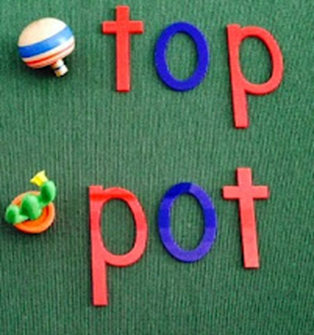
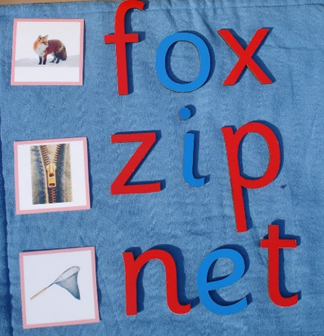
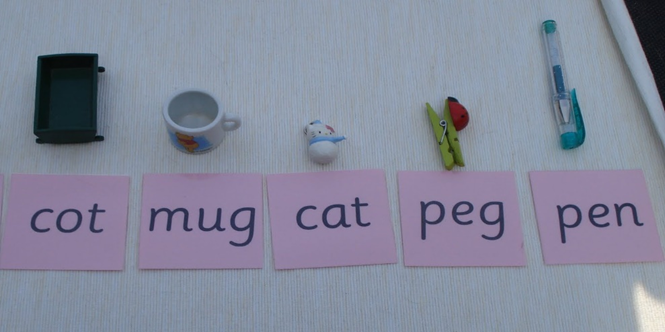








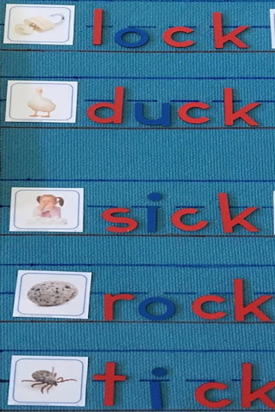
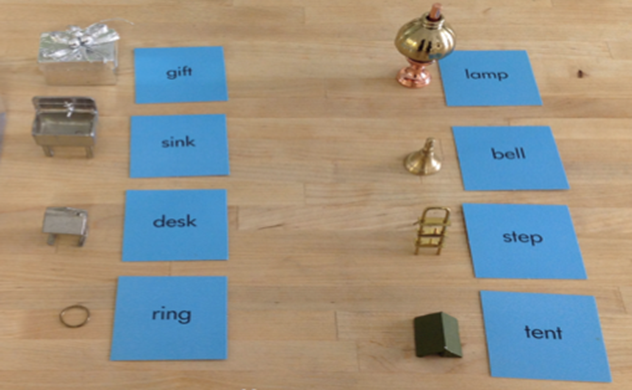







Comments
Post a Comment
If you have any inquiries or suggestions drop comment here